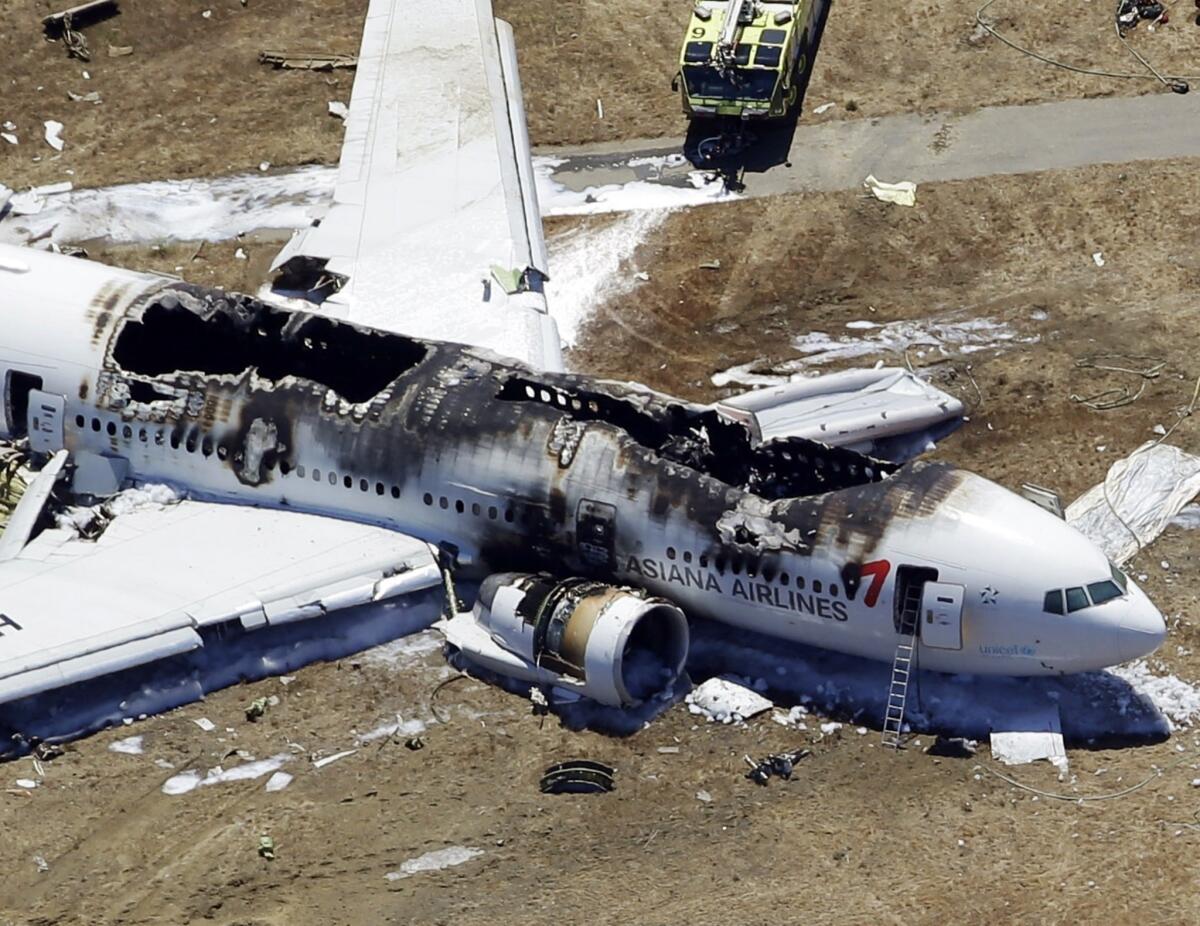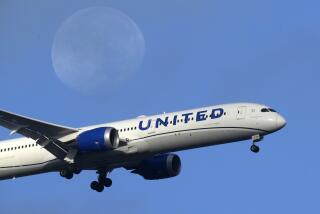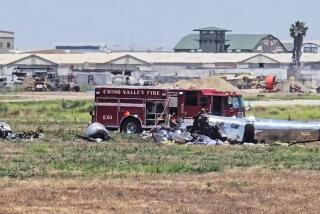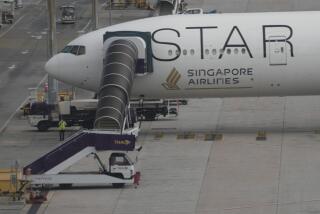Boeing’s 777 considered a safe passenger jet

The type of aircraft flown by Asiana Airlines that crash-landed at San Francisco International Airport on Saturday has long been regarded as one of the safest passenger jets ever developed.
Since Boeing rolled out its first 777 to a huge crowd at its manufacturing facility in Everett, Wash., in 1994, more than 1,100 have been built and only one had been in a major accident, with no fatalities.
On Saturday, Asiana Flight 214 from Seoul, South Korea, crashed after touching down on Runway 28, killing at least two passengers and injuring dozens of others.
The plane maker issued a statement Saturday afternoon, saying it “extends its concern for the safety” of those aboard the downed aircraft.
“Boeing is preparing to provide technical assistance to the National Transportation Safety Board as it investigates the accident,” the statement said.
Tom Captain, aerospace analyst with the financial firm Deloitte, said the passenger fatalities on the commercial flight were the first in three years.
“Although tragic, commercial air transportation has had a stellar safety record — something like 40 times safer than driving,” he said.
The Boeing 777 has been seen as one of the safest aircraft in the skies today.
Nearly all of the world’s most important airlines fly 777s on long-range routes. It has been a major workhorse for carriers flying from the United States to Europe and Asia.
“It has a remarkable level of reliability,” said Richard Aboulafia, an aerospace analyst with Teal Group Corp., a Virginia research firm. “With its track record, it’s as good as it gets when it comes to aircraft design.”
However, its tenure has not been devoid of incidents.
In 2008, a 777 operated by British Airways crash-landed in England at Heathrow Airport’s southern runway. An investigation into the crash found that the plane — which was carrying 152 people at the time — had lost power because a buildup of ice had restricted fuel flowing into the engines.
Last May, Boeing notified airlines operating 777s of a problem involving a faulty part that caused an automatic shutdown in the 777’s General Electric Co.-made engines. In a span of about four months, there were two incidents in which engines shut down in midflight.
There were 26 airplanes in service with the engines. It was not immediately clear whether Asiana Airlines, which operates nine of the planes, was one of the affected airlines.
Boeing makes six versions of the twin-aisle, twin-engine aircraft. The 777 that crash-landed in San Francisco, a 777-200ER, costs around $260 million and made its first passenger flight in 2006. The airline website SeatGuru said the plane has 295 seats and was recently updated with 24 business-class sleeper seats.
Asiana Airlines is known in L.A.’s sizable Korean community as the other major South Korean carrier — Korean Air is the largest — and consistently ranks as one of the world’s top airlines in terms of service and safety.
The airline started in 1988 with a single plane flying short hops to cities within South Korea. It operates 12 Boeing 777-200ER aircraft.
Asiana Airlines’ pilots have a reputation for being “cowboys” because many are former South Korean military pilots, according to an aviation analyst.
The airline carries a combination of business travelers from Asia and visitors on package tours traveling to the U.S. As part of the Star Alliance, Asiana also draws fliers connecting with flights on United Airlines and US Airways, among other alliance members, said Joe Brancatelli, an online columnist on business travel.
Although tourism from Asia has been surging in the last few years, Brancatelli said he has not heard of Asiana mounting an expansion of the airline to serve the tourists.
Saturday’s accident should not cause major disruptions to the nation’s air traffic, he said, because it took place during a slow travel day. Travel for the Independence Day weekend should begin to surge Monday, when many vacationers start to return home.
But Brancatelli said he believes San Francisco International Airport will be fully operational by Monday.
“It’s not a super peak period,” he said. “They are going to work to get the runways open. The rest of the world goes on.”
Times staff writer Hugo Martín contributed to this report.
More to Read
Inside the business of entertainment
The Wide Shot brings you news, analysis and insights on everything from streaming wars to production — and what it all means for the future.
You may occasionally receive promotional content from the Los Angeles Times.











